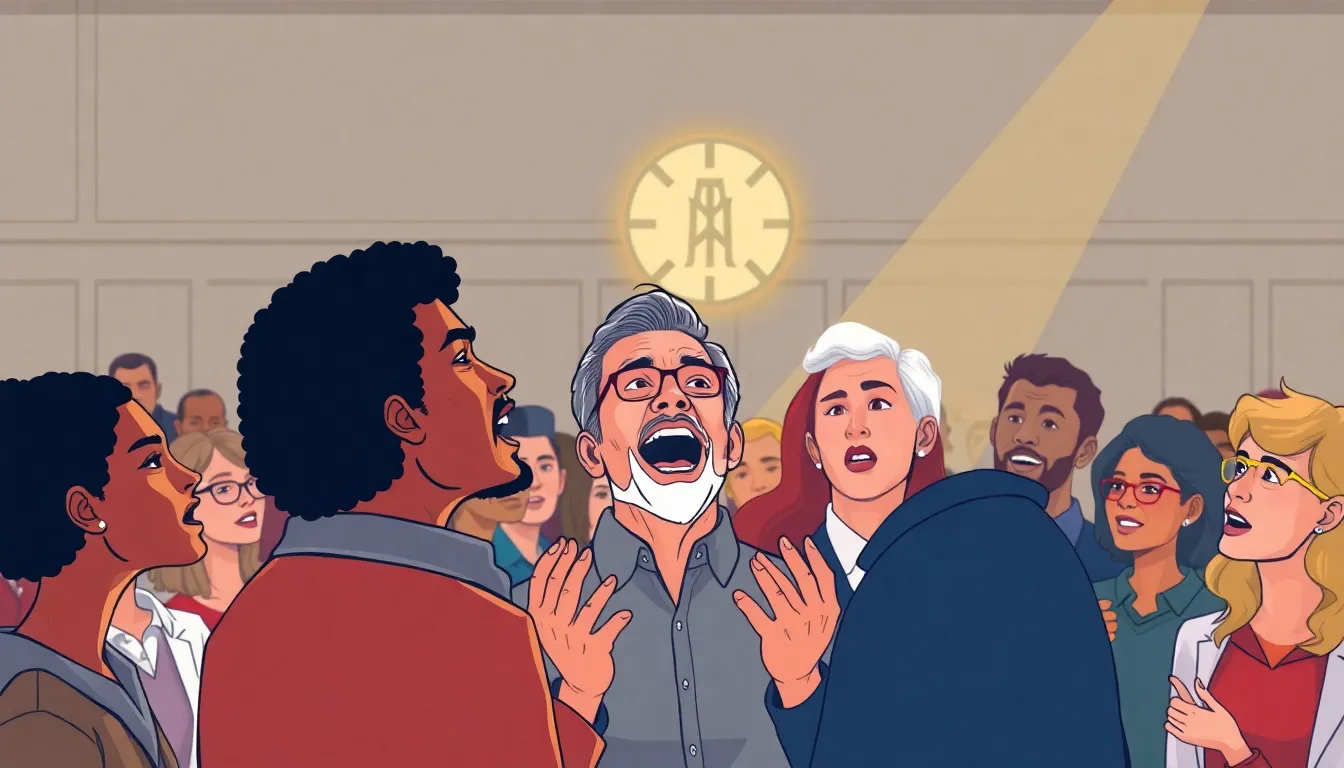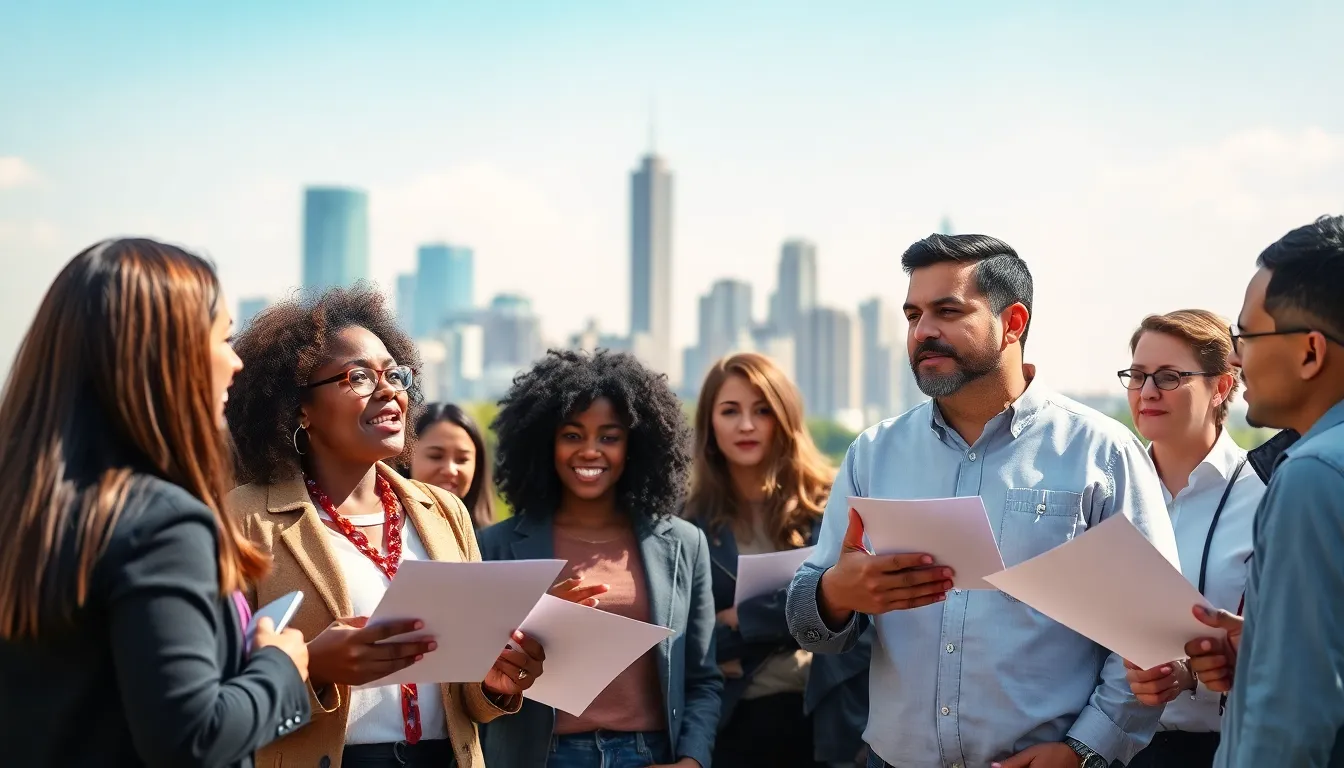Public opinion shapes the political landscape like a well-timed plot twist in a gripping novel. It’s the collective voice of the people, influencing everything from elections to policy decisions. Understanding this concept is crucial for anyone diving into AP Government. After all, what’s the point of knowing the ins and outs of the Constitution if you can’t decipher what your neighbors really think about it?
Public Opinion Definition AP Gov
Public opinion refers to the collective attitudes and beliefs of individuals regarding political issues and policies. It’s a critical concept in AP Government, as it influences decision-making and public policy. Understanding public opinion involves recognizing how people feel about various topics, including government actions, political candidates, and social issues.
Polls serve as a primary tool for measuring public opinion. These surveys provide insights into how specific demographics perceive certain issues. For example, social media platforms and traditional news outlets often conduct polls to gauge public sentiment on current events. Accurate data from these polls allows government officials and politicians to align their strategies with the views of their constituents.
Moreover, public opinion can shift due to various factors, such as major events or changes in societal norms. Political campaigns aim to shape public sentiment through messaging and advertising. Candidates often adjust their platforms based on public reaction to certain issues, showcasing the dynamic nature of public opinion.
In AP Government, it’s essential to analyze the connection between public opinion and democratic processes. Voter turnout can reflect prevailing attitudes in society. For instance, high turnout might indicate that the public feels strongly about an issue or election.
Lastly, public opinion plays a vital role in the checks and balances of a democratic system. Elected officials often consider constituents’ opinions when making decisions. Engaging with public sentiment ensures that leaders remain answerable to the electorate, reinforcing the democratic principle of governance by the people.
Importance of Public Opinion



Public opinion holds immense relevance in the political arena. It shapes the interactions between constituents and their elected representatives, offering insight into community values and priorities.
Influence on Policy Making
Public opinion significantly influences policy decisions. Policymakers often consult public sentiment to gauge support or opposition to specific issues. When widespread agreement exists on a subject, it can pressure officials to enact corresponding legislation. Furthermore, public opinion surveys inform representatives about voter preferences, guiding their actions. A strong public reaction to an event regularly compels lawmakers to reconsider or expedite policy changes. Tracking shifts in opinions can alert decision-makers about potential challenges or opportunities in governance.
Role in Electoral Processes
Public opinion plays a critical role in electoral processes. Candidates often tailor their platforms based on constituents’ attitudes toward various matters. Understanding voter priorities helps candidates connect with the electorate and position themselves favorably in contests. Polling data regularly illuminates trends, revealing which issues resonate most with voters. High public engagement can increase turnout, directly impacting election outcomes. Political campaigns strategically respond to public sentiment, often adapting messaging to align with the prevailing views within their target demographics.
Measuring Public Opinion
Measuring public opinion involves several techniques to gauge the perspectives of individuals regarding political issues. Polls serve as a primary method and provide valuable insights into how various demographic groups perceive specific topics.
Polling Methods
Surveys often use quantitative methods such as telephone interviews, online questionnaires, and face-to-face interactions. Each method offers distinct advantages, with telephone interviews allowing for quick outreach and online questionnaires facilitating broader participation. Sample selection plays a vital role, ensuring a representative cross-section of the population. Additionally, tracking polls monitor changes in public opinion over time, capturing shifts in sentiment. Exit polls stand out by revealing voter preferences right after an election, reflecting immediate reactions.
Key Terms in Public Opinion
Understanding terminology related to public opinion enhances comprehension of surveys and their implications. “Margin of error” indicates the potential deviation in poll results, representing the reliability of findings. “Sample size” reflects the number of respondents in a survey, with larger sizes generally yielding more accurate results. “Focus groups” provide qualitative insights through discussions with selected individuals, offering depth in understanding attitudes. “Political efficacy” measures citizens’ belief in their influence on political processes, impacting engagement levels. Clarity around these terms aids in better interpreting polling results and their relevance in the political landscape.
The Impact of Media on Public Opinion
Media significantly influences public opinion through various channels, such as television, radio, and social media. Information dissemination shapes perceptions about political events and policies. News coverage can highlight specific issues, affecting what citizens prioritize.
Social media platforms allow for rapid sharing of opinions, amplifying public discourse. Users engage in conversations that reflect their beliefs and emotions, expanding the reach of particular viewpoints. Campaigns often leverage these platforms to connect with voters, tailoring messages to resonate with target demographics.
Misinformation poses a considerable challenge, complicating the public’s understanding of issues. Studies indicate that exposure to unreliable sources can lead to distorted perceptions. Verifying facts becomes essential for informed decision-making since the accuracy of information affects public trust in institutions.
Surveys show that media portrayal influences electoral outcomes. Voter sentiment fluctuates based on how candidates and policies are presented. Candidates who dominate media narratives often gain an advantage, reflecting public sentiment shaped by coverage.
Media representation of diverse perspectives can enhance democracy by ensuring marginalized voices are heard. A plurality of opinions encourages critical thinking among citizens. Balanced reporting fosters a deeper understanding of complex issues.
Overall, the interplay between media and public opinion is dynamic. Awareness of media’s impact enables citizens to navigate political landscapes effectively, ensuring they remain engaged and informed participants in the democratic process.

